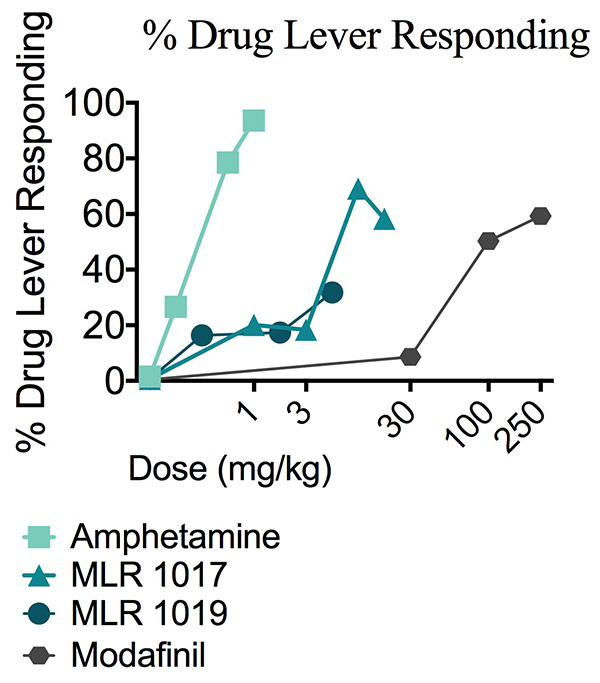Drug Discrimination
Discover how Melior’s unique phenotypic screening platforms can uncover the untapped value of your candidate therapeutic
The actions of psychoactive agents as discriminative stimuli are closely related to their ‘subjective’ effects in humans. In this sense, it is believed that analysis of discriminative properties of drugs in animals is of considerable value in predicting which specific drugs may be prone to abuse.
However, a second major reason for the popularity of drug discrimination procedures is the remarkable pharmacological specificity of the discriminative stimulus properties of compounds. Thus, the paradigm may also be used to elucidate pharmacological mechanisms of novel compounds depending on their discriminative stimulus similarities in comparison to a given training drug with known pharmacology.
Drug discrimination is a well-established technique for measuring the in vivo pharmacology of drugs of abuse. The technique can be used as a means of determining the abuse liability of test compounds when compared with a known drug of abuse.
Rats can be trained daily during 15 minute sessions, during which lever pressing is reinforced by the presentation of a sucrose pellet. Prior to each training session, rats are injected with either a training drug or vehicle. Responses on the “drug lever” are reinforced during drug training sessions and responses on the other, “vehicle lever” are reinforced during vehicle training days.
Rats can be tested twice weekly, with training sessions conducted on the remaining days of the week. Tests can be used to determine whether a compound mimics the training drug or whether a compound alters the effects of the training drugs.
Two measures are taken during a drug discrimination test: the percentage of responses on the drug-appropriate lever and the rate of responding.
Drugs eliciting 80% or greater responding on the drug-trained lever are classified as producing full generalization to the training compound. This is a measure of the abuse liability of a new compound. Full generalization to a known drug of abuse can mean a high risk of abuse potential. Compounds producing 20-80% drug lever responding are said to partially generalize to the training days, indicating a lower abuse liability than compounds eliciting full generalization.
In the current study, rats were trained to discriminate 1 mg/kg amphetamine from vehicle. MLR 1017, MLR-1019 and modafinil were then tested to determine their ability to generalize to amphetamine.
Figure 1. % Drug Lever Responding in Sprague Dawley rats trained to discriminate 1 mg/kg amphetamine from saline, MLR-1017 elicited partial generalization to the amphetamine discriminative stimulus cue. MLR-1017 10 mg/kg produced approximately 70% drug lever responding. When the dose of MLR-1017 was increased to 20 mg/kg, response rates of rats were markedly reduced with only an n of 2 completing a fixed ratio on the drug-paired lever. This reduction in response rates demonstrates a response impairment and no further doses were tested.
MLR-1019 at 5 mg/kg produced partial generalization to amphetamine, eliciting approximately 31 % drug lever responding. When the dose of MLR-1019 was increased to 10 mg/kg responding from all rats was abolished, again implying a response impairment. Modafinil produced partial generalization to the amphetamine discriminative stimulus cue (60%) (Amanda et al, (2013)
Figure 2. This figure depicts the mean response rates produced after dosing with amphetamine, modafinil, MLR-1017 and MLR-1019. As mentioned in the previous figure, the high doses of both MLR-1017 (20 mg/kg) and MLR-1019 (10 mg/kg) reduced responding significantly, demonstrating that response impairment occurs at these high doses.
Reference
Amanda J. Quisenberry, Thomas Prisinzano, Lisa E. Baker (2013). Combined effects of modafinil and d-amphetamine in male Sprague–Dawley rats trained to discriminate d-amphetamine. Pharm. Biochem. Behav. 110: 208-215.





 Interested in running a Drug Discrimination study?
Interested in running a Drug Discrimination study?